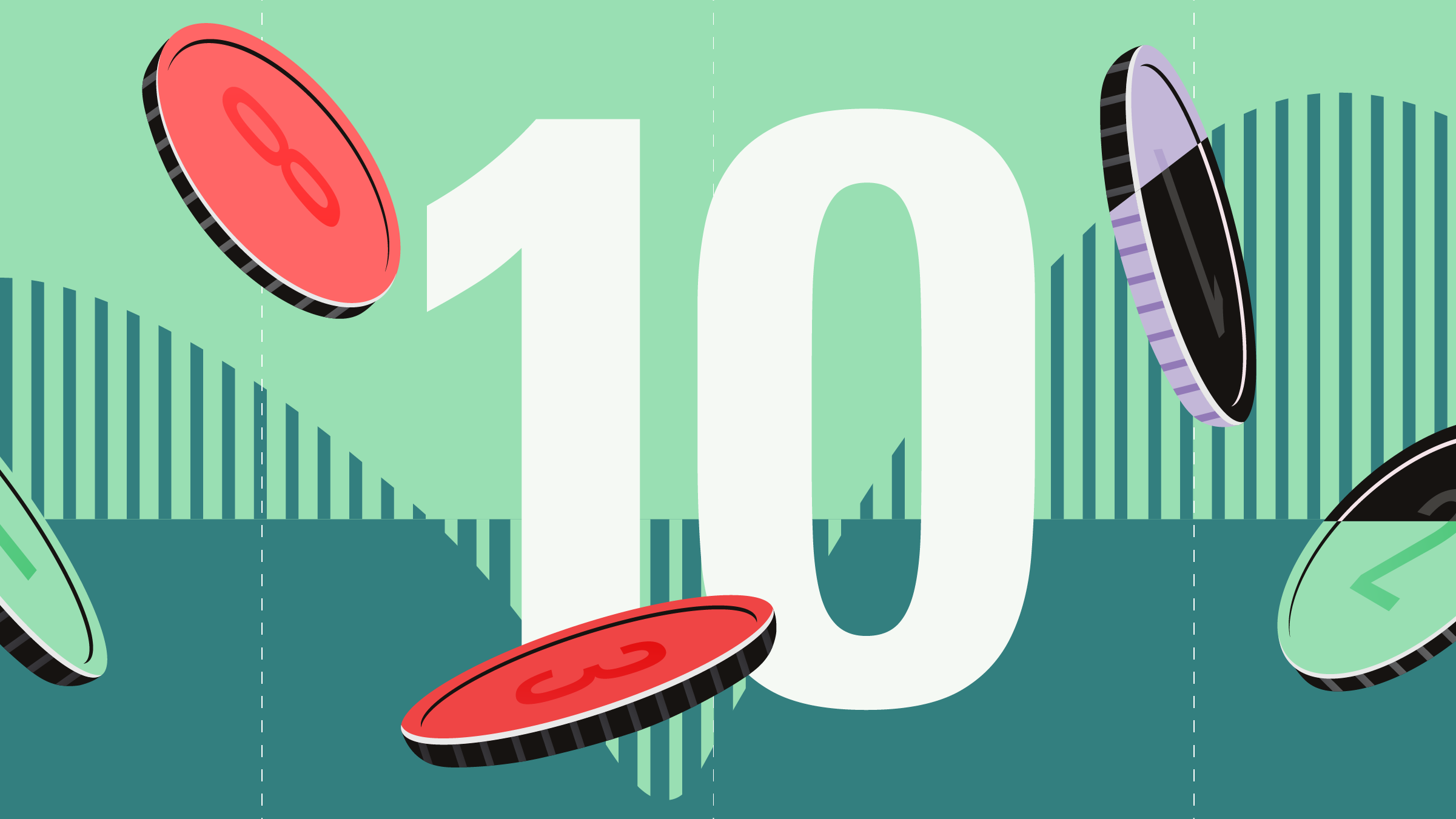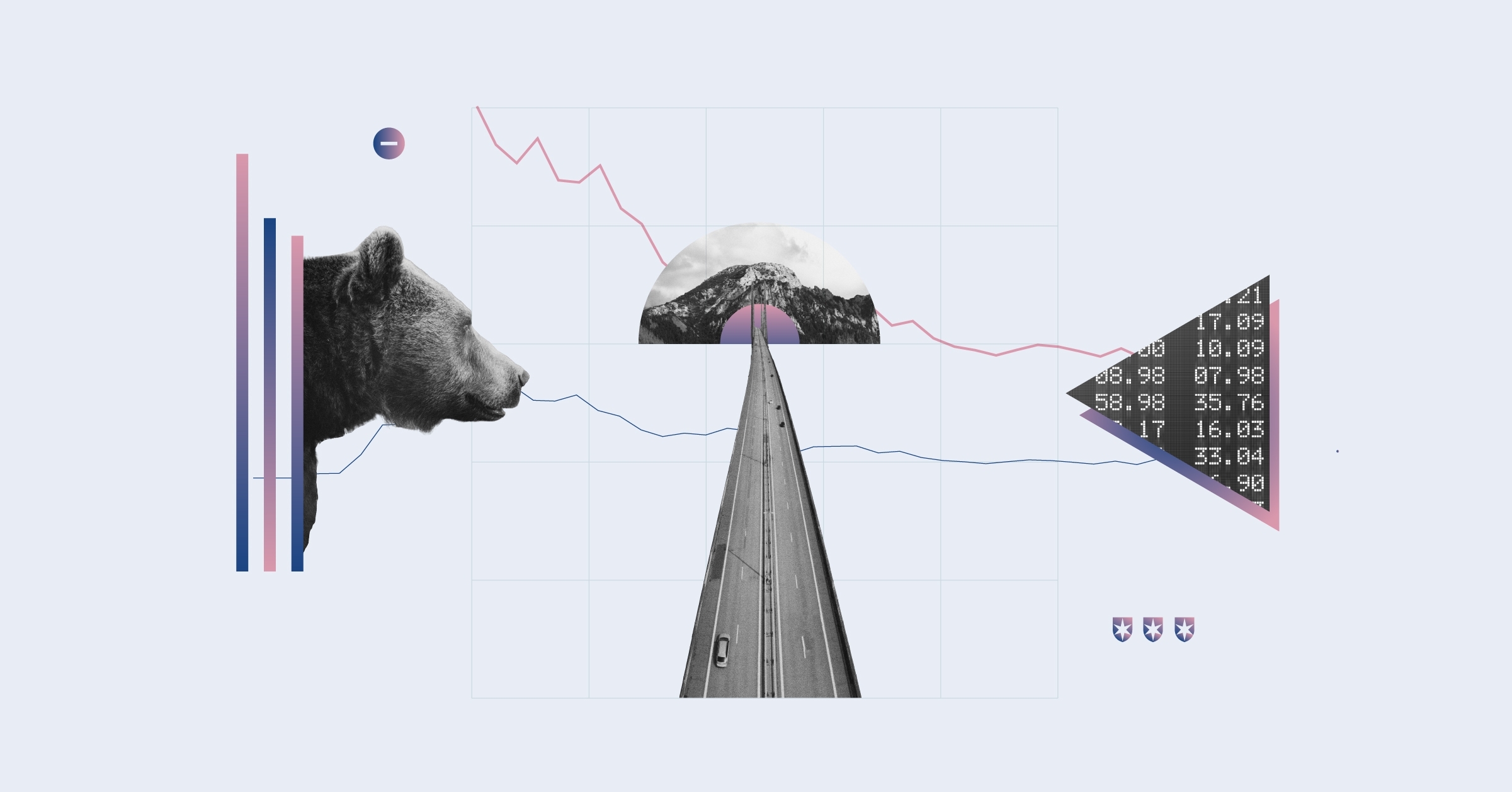While the stock market is in the throes of volatility, it's easy to forget that equities have generally been moving in a straight line higher. Since the market hit its trough, the S&P 500 has climbed more than 280% as of this writing.
In January alone, it was up more than 5%. One big reason why stocks have done so well up until this point is that bond rates have been at historically low levels. The 10-year U.S. Treasury yield hit its lowest point ever, 1.36%, not even two years ago. It's hard for investors to make any money at those interest-rate levels, so, naturally, they turned to stocks.
Now though, the idea that we're still in a "lower for longer" rate environment is being questioned by many financial professionals. With the 10-year Treasury yield rising by about 18.75% year-to-date, it was at 2.85% at the time of writing, ultralow rates are now a thing of the past. But where do rates go from here? Do they get to levels where investors move money from stocks to bonds?
Interest Rates are Rising
Bob Michele, global head of fixed income for JPMorgan Chase, says that the lower for longer story is changing. The tools that helped pushed down rates, such as quantitative easing and short-term rate cuts, have done their job, he says. We're now in a rising rate environment, not just in the U.S., but, after this year, in Europe and Japan as well.
"Everything is being thrown into reverse," he says, adding that in January 2017, central banks around the world were spending $167 billion on bond purchases; they spent only $44 billion this January.
With those monetary policy tools now being withdrawn, it's only natural that yields would rise to more normal levels. However, it's unclear as to what more normal levels means. Michele thinks rates are "absurdly low" given the strong economic recovery we've seen, but until quantitative easing disappears entirely, he doesn't think the 10-year Treasury yield can rise much above 3.25%.
Where does he think interest rates should be? Somewhere around 5.25%. Historically, he says, the real rate on the Fed funds rate has been about 2.25%. If the Federal Reserve is targeting 2% inflation, then that would put the overnight rate at about 4.25% and the 10-year Treasury yield at around the 5% mark.
The Fed fund rate is currently about 1.25%, so it's still got a long way to go, but with at least three rate hikes priced into the market today, and the talk of a potential fourth hike, we could see an overnight rate of at least 2% by year end.
But How Much Higher Will They Climb?
Other fixed-income fund managers, though, aren't as bullish on rising bond yields. Steve Bartolini, who's a member of T. Rowe Price's fixed-income team, doesn't think 10-year Treasury bond yields will rise much further from here.
While stock investors may be just waking up the fact that bond yields have climbed, the increases have been occurring over the last four months, he notes. In fact, the 10-year Treasury yield is up about 40% from September, when it was hovering around 2%.
He thinks today's rates are more in line with where they should be, given where we are in the economic cycle.
"I'm not concerned we're going to see five-year notes, which backed up by 100 basis points over the last four months, rise another 100 basis points over the next four months," he says.
Although he doesn't think rates will decline from here, Bartolini would still characterise the current environment as a low-rate regime. Unlike some equity investors, he doesn't think inflation will hit 3%, technology, globalisation, labour dynamics and demographics will keep prices low for a while, he says, and that should keep bond rates across the curve somewhere between 2.75% and 3%.
Of course, it's hard to predict where markets might go, and there are some risks to these forecasts. Wage growth – which jumped by a surprising 2.9% year-over-year in January and was, according to many, a catalyst for the equity sell-off – could grow even more rapidly, and that could cause capital goods and import prices to rise higher.
Continued Bumpiness Ahead?
In theory, a low rate environment is good for stocks, hence the last few years of equity gains, but clearly, there is some concern among stock-pickers that the risk-free rate between bonds and equities is tightening. If investors feel that they can make money owning a lower risk security, like a bond, then, of course, they'll choose to own that asset over a riskier one.
While some experts have said that a 3% 10-year Treasury yield will cause investors to move from stocks to bonds, income fund manager Tom Goggins, says that, based on what the stock market has done over the last few days, it's possible that the magic number may have already been hit.
"It was a 2.75% yield that impacted stocks," he says.
Even if markets do settle down over the next week or two, and even though we're still at historically low rates, investors should expect more volatility ahead. Rising yields are not good for stocks, and while Goggins is not ready to say that we're at a tipping point, if the market anticipates inflation, then the "discount rate on the price of stocks goes down," he says.
Bartolini, meanwhile, doesn't think we're at the point where people will start moving wholeheartedly into bonds. The accommodation phase is ending, he says, but we're not yet in a tightening phase where rates rise so high that equity investors panic – but we may not see the same kinds of gains we’ve seen in years past.
From Goggins' point of view, bond yields are where they're supposed to be today, while equity markets are doing what they’re meant to do: move up and down. Things may get rockier down the road, but for the foreseeable future, equities should still rise, albeit not in a straight line.
"This is what a real market looks like," he says. "Markets go up and down and bonds go up and down. People think they're entitled to 20% market gains every year, but they're supposed to lose money on occasion.”
Bryan Borzykowski is a freelance columnist for Morningstar.com. The views expressed in this article do not necessarily reflect the views of Morningstar





























